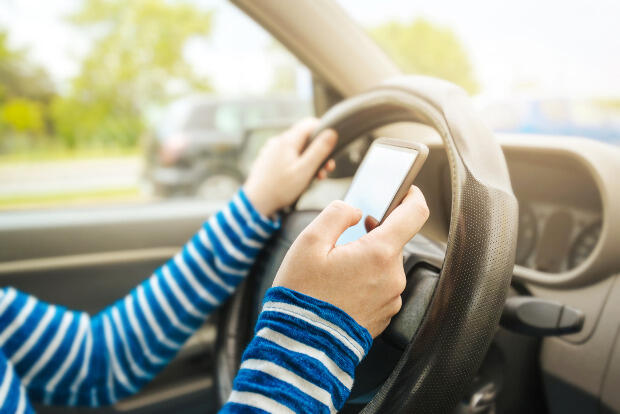Dec. 22, 2016
To stay safe, disconnect from distraction while driving
Share this story

Whether it’s a cell phone in your palm, food at your lips or an in-vehicle navigation system blaring instructions, it is not uncommon for drivers today to split their attention and fail to fully focus on the driving at hand. Centers for Disease Control statistics state that each day more than eight people are killed and 1,161 are injured in vehicle crashes that involve a distracted driver.

Beth Broering, trauma program manager at VCU Health, sees the fallout from those accidents firsthand.
“In the last several weeks we have seen an increase in teenagers in motor vehicle crashes,” she said. “We believe this is largely related to high school and college students being out of school for the holidays. Still, everyone is susceptible to distracted driving, from the elderly to the young. We all are now so accustomed to having smartphones and other distractions at our fingertips.”
By definition, distracted driving is driving while doing another activity that takes your attention away from the road ahead. Distractions are characterized as either visual, manual or cognitive. Texting while driving is particularly dangerous, experts say, because it combines all three distraction types. At 55 mph, the average text takes your eyes off the road long enough to cover a football field.
Severe traumatic brain injuries and chest injuries such as rib fractures, lung injuries and major abdominal injuries are just some of the conditions suffered by people involved in motor vehicle and motorcycle crashes caused by distracted driving, Broering said.
| Put cell phones away when driving. Even hands-free devices can be distracting. |
| Stop and pull to the side of the road if you need to make or answer a call. |
| Always keep both hands on the steering wheel. The nine and three position is advised by traffic officials. |
| Always use public transportation, a taxi/uber, or have a designated driver if you will be drinking alcoholic beverages. |
| Never mix alcohol with any prescription pain medicine and be aware of any side effects with other prescription medicine you might be taking. |
| Ensure you and everyone in your vehicle is properly restrained, both in the front and the back seats. Improper use of seat belts is as dangerous as not wearing a seatbelt. A person has a 50 percent higher risk of dying if they are ejected from a car. |
Subscribe to VCU News
Subscribe to VCU News at newsletter.vcu.edu and receive a selection of stories, videos, photos, news clips and event listings in your inbox.











